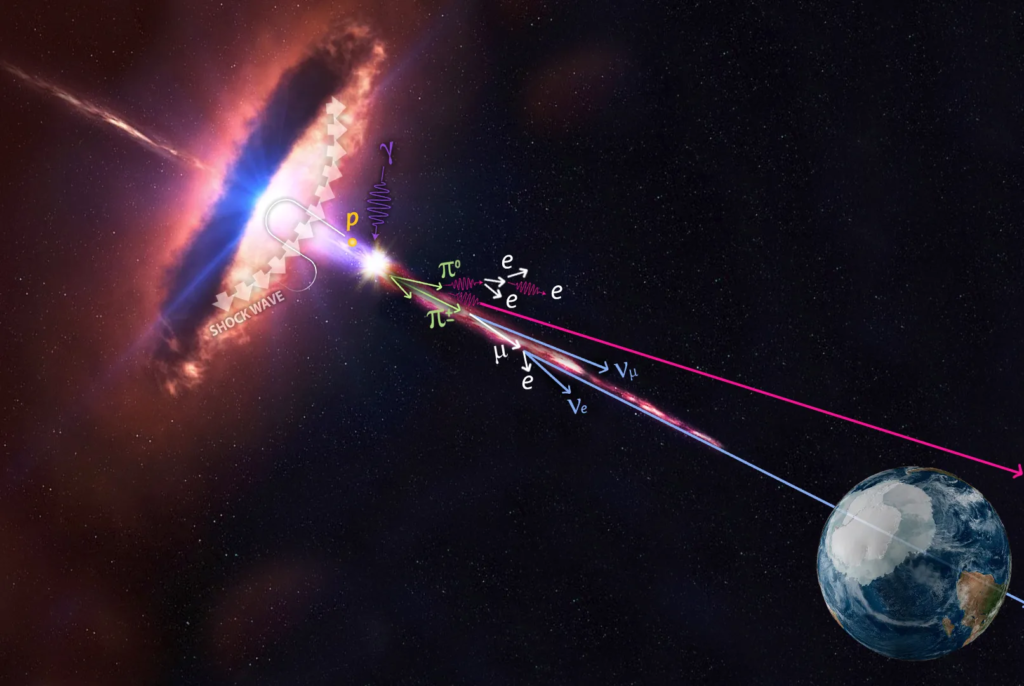Neutrino Chemistry: A Gateway to Understanding the Universe
Neutrinos are among the most mystical particles in space. They do play a good role in the area of physics, but recent people are questioning their role and impact within chemistry, specially considering chemical bonds and reactions. The objective is to clearly explain the subject of neutrino chemistry for better interpretation of how they can play a role within a process, uncovering what it’s so mystical about neutrinos.
What Is a Neutrino?
Let’s define a neutrino before getting into chemistry.

- Extremely Light: Neutrinos are tiny subatomic particles, smaller than an atom. They weigh practically nothing. They weigh even less than an electron-about one million times less, actually.
- No Electric Charge
- Neutrinos do not carry any electric charge; hence they do not respond to charged particles like electrons and protons. This makes it “ghost-like” in nature and really hard to catch.
- Everywhere but Invisible:
- Trillions of neutrinos travel through your body every second. They originate from a variety of sources, from the sun through cosmic rays to nuclear reactions. But so few of them interact with matter that we do not know they exist.
- **Three Flavors:
Neutrinos are divided into three different types or “flavors”: electron neutrinos, muon neutrinos, and tau neutrinos. They can even turn from one type into another in a process called *neutrino oscillation*.
Why Are Neutrinos Important?
Neutrinos are integral to learning about the universe. Scientists use them to study:
- How stars generate their energy.
- The nature of particles at the very smallest scales.
- Secrets about dark matter and the earliest moments of the universe.
But what about their role in chemistry? This is where things get fascinating.
Neutrinos and Chemistry: The Basics
Chemistry is all about the interactions between atoms and molecules, usually involving electrons. Neutrinos, being neutral and lightweight, don’t interact with electrons or nuclei in the same way. However, researchers are exploring some intriguing possibilities:
- Influence on Chemical Reactions:
- Neutrinos could slightly influence certain types of chemical reactions. For example, the interactions might release small quantities of energy that can change how molecules bind or break.
- Role in Extreme Environments:
- In extreme environments, such as in stars or nuclear reactors where the production of neutrinos is high, their impact on chemical processes might be observable.
- **Triggers for Rare Reactions:
- Neutrinos may facilitate rare or unusual chemical reactions that would not otherwise take place, especially in highly energetic or radioactive environments.
Neutrinos in Chemical Bonding
Chemical bonds occur when atoms share or exchange electrons. Neutrinos do not participate directly in these bonds, but there are theories about their indirect influence:
- Energy Transfers:
- In some nuclear reactions, neutrinos take some energy away. This energy exchange might have a bearing on atoms and molecules stability in high-energy environments.
- Decay and Bonding:
- Neutrinos are emitted in beta decay that occurs in radioactive elements. This process could indirectly affect the strength of chemical bonds around it, since the structure of an atom is altered.
- Quantum Effects:
- At the quantum level, neutrinos could interact with particles such as electrons or nuclei through weak forces. These are rare and weak interactions that could still be important in the chemistry of exotic systems.
Neutrinos and Catalysis
Catalysis accelerates chemical reactions. Most often this is done using a material known as a catalyst. In extreme conditions, neutrinos could serve as “quantum catalysts” by:
Changing energy levels in molecules.
- Formation of transient states that facilitate reactions to occur more easily.
The concept is still quite speculative, but it might have exciting ramifications for both astrochemistry and nuclear chemistry.
Implications for Real Life
Neutrino chemistry is quite abstract, but some possible practical implications are as follows:

- Neutrinos are highly produced in stars. If the chemical effects of neutrinos could be studied, perhaps insights into the origin of elements inside stellar environments would come through.
- Neutrinos are produced in huge quantities in nuclear reactors. Their role may be critical to improving reactor efficiency and safety.
- Some scientists believe that neutrinos could have played a role in the chemical reactions that initiated life on Earth, particularly when the planet was young and energetic.
Challenges in Studying Neutrino Chemistry
Why are we still not much better than guessing what goes on in neutrino chemistry? The reasons are:
- Weak Interactions:
Neutrinos don’t interact often with matter. Their presence cannot be measured easily. - Detection Difficulty:
Massive detectors filled with tons of water or ice are required for the detection of neutrinos. - Complex Theories :
- Neutrino chemistry: It is the mixing of quantum mechanics, nuclear physics, and traditional chemistry that makes the task very complex.
Neutrino Chemistry Future
Despite all of these complications, researchers feel hopeful. Advances in technology and physics are actually making it easier for them to study neutrinos and what they might do to their chemistry. Some exciting prospects include the following:
- Neutrino effects in chemical reaction experiments.
- Space missions to other planets with a focus on neutrino chemistry.
- Neutrinos have associated processes in materials that have advanced properties or, on a smaller scale, are energy storage systems.
Conclusion
Neutrinos are infinitesimally small particles of enormous potential. Though they do not follow matter’s usual interactions with one another, their mild actions may reveal new possibilities to this universe. From stellar composition to the origin of life, neutrino chemistry spans between physics and chemistry worlds. Though it is still in its infancy, this area of study reminds us that even the smallest particles can have a big impact.
